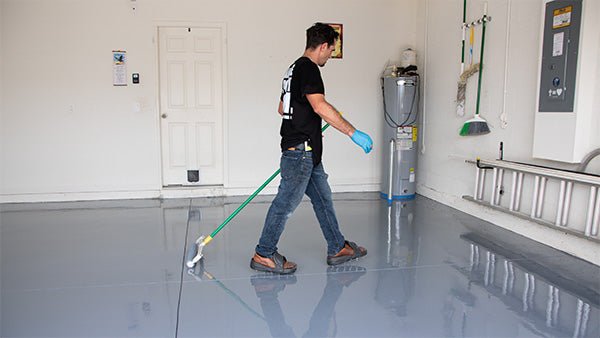
Garages are often overlooked when it comes to safety, yet they house a myriad of potential hazards. From hazardous materials to cluttered spaces, understanding and addressing these risks can help protect your family and belongings. In this blog post, we’ll explore the top ten garage hazards and provide practical tips on how to avoid them.
1. Slips and Falls
Hazard:
One of the most common accidents in garages is slipping or tripping, often caused by spills, clutter, or uneven flooring.
Prevention:
Consistently maintain the garage floor by cleaning it regularly, swiftly addressing any spills, and keeping pathways free from clutter. In Salt Lake City, consider applying garage floor epoxy for added durability and an attractive finish. Additionally, think about placing anti-slip mats in moisture-prone areas, particularly during winter months when ice is likely to be brought indoors.
2. Inadequate Lighting
Hazard:
Poor lighting can lead to accidents as it becomes difficult to see hazards or properly identify tools and materials.
Prevention:
Ensure that your garage is well-lit with bright, energy-efficient bulbs. Install motion-sensor lights for added convenience and safety. Regularly check and replace burnt-out bulbs to maintain a well-lit environment.
3. Toxic Chemicals
Hazard:
Garages often contain hazardous materials like paints, solvents, and pesticides, which can pose serious health risks if not handled properly.
Prevention:
Store all chemicals in their original containers with clear labels. Keep them in a locked cabinet, out of reach of children and pets. Always read and follow safety instructions, and consider using less toxic alternatives whenever possible.
4. Fire Hazards
Hazard:
Garages can easily become fire hazards due to flammable materials, clutter, and electrical issues.
Prevention:
Keep all flammable materials, such as gasoline, paints, and oily rags, stored safely in appropriate containers. Ensure your garage has a working smoke detector and fire extinguisher. Avoid overloading electrical outlets and routinely check for frayed wires or damaged cords.
5. Improper Tool Storage
Hazard:
Tools left lying around or stored haphazardly can lead to cuts, bruises, or other injuries.
Prevention:
Invest in tool organizers, pegboards, or cabinets to store tools securely. Always return tools to their designated places after use, and ensure sharp tools are stored safely out of reach of children.
6. Vehicle Safety
Hazard:
Garages are often home to vehicles, which can pose dangers, especially if children or pets are present.
Prevention:
Always supervise children and pets in the garage. Teach children about the dangers of moving vehicles and ensure they know to stay clear when a vehicle is being driven in or out. Consider installing garage door sensors that prevent closure if something is in the way.
7. Improper Ladder Use
Hazard:
Ladders are commonly used in garages for storage or maintenance, but improper use can lead to falls.
Prevention:
Always inspect ladders for stability and integrity before use. Use the right ladder for the job, and ensure it is placed on a stable surface. Never exceed the ladder’s weight limit, and consider using a spotter if you’re working at significant heights.
8. Overloaded Shelves and Storage Units
Hazard:
Overloading shelves can lead to collapses, causing injury and damage to items below.
Prevention:
Follow weight limits for shelves and storage units. Distribute weight evenly, and regularly check for signs of wear or sagging. Use heavy-duty shelving units for storing heavier items, and keep frequently used items at waist level to minimize strain.
9. Inadequate Ventilation
Hazard:
Garages can accumulate fumes from vehicles and chemicals, posing health risks if not adequately ventilated.
Prevention:
Ensure your garage has proper ventilation, such as windows that can be opened or exhaust fans. When working with chemicals, always do so outdoors or in a well-ventilated area. Avoid running vehicles in an enclosed garage for extended periods to reduce carbon monoxide exposure.
10. Cluttered Spaces
Hazard:
A cluttered garage not only poses tripping hazards but can also make it difficult to find emergency items in a hurry.
Prevention:
Regularly declutter your garage by disposing of or donating items you no longer need. Organize the space using bins and shelves to create designated areas for tools, sports equipment, and seasonal items. A clean, organized garage reduces hazards and makes it easier to locate necessary items quickly.
In Conclusion
Your garage can be a valuable space for storage and projects, but it is essential to recognize and mitigate the hazards that come with it. By implementing the prevention strategies outlined above, you can create a safer garage environment for your family and friends. Regular maintenance, proper storage, and awareness of potential risks are key to enjoying a functional and hazard-free garage. Remember, safety is an ongoing process—make it a habit to check for hazards regularly to ensure a safe space for all.

